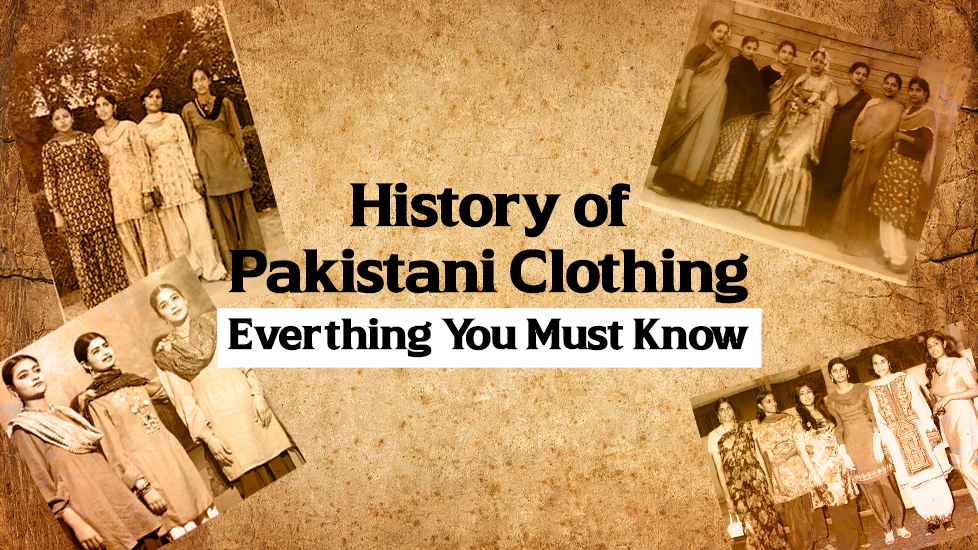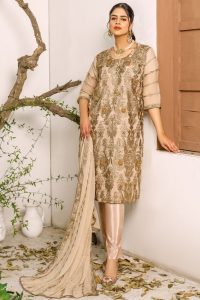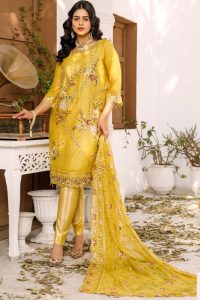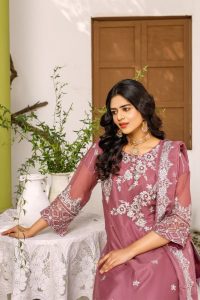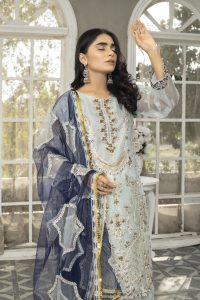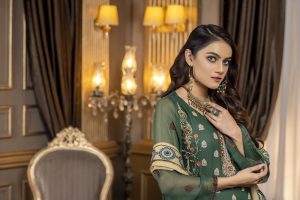A land of rich cultural heritage and traditions Pakistan is a vibrant fashion show reflecting its history, culture, and social dynamics. Pakistani Women’s Clothing Brands in Pakistan have undergone a major transformation and require a modern era transformation that has made them, let’s read further.
Cultural Foundations: The Essence Of Pakistani Women’s Clothing
Women’s fashion in Pakistan is reflective of its ethnic diversity. Shalwar Kameez, which is a combination of long sleeves and trousers, is the national attire and is worn by women across the country.
This versatile article is not only comfortable but also offers intricate embroidery, and vibrant chiffon colors. Different fabrics in each district of Pakistan have their own unique style and decorative embroideries. Such as Punjab Phulkari embroidery, Sindh Azrak block print, and Balochistan glasswork.
Cultural events and festivals play an important role in fashion. For example, weddings are grand celebrations where bridal outfits, are often heavily embellished with gold and silver threads.
They play a prominent role and bridal lehengas, ghararras, and sharraras are adorned with intricate embroidery, making them masterpieces.
These traditional designs have inspired modern Ketifa fashion designers to bridge the gap between tradition and modernity by incorporating traditional elements into new fashion.
Click To Watch Ketifa Brand’s YouTube documentary On the History Of Fashion
Historical Milestones: Pakistani Women’s Clothing Brands
The history of womenswear in Pakistan is linked to the socio-political changes in the country. While it existed before partition, Mughal, Persian, and Indian influences have mingled, resulting in rich textiles and intricate luxury pret designs.
After independence, the 1950s and 1960s were a time of simplicity and luxury. Women’s fashion consisted of understated shalwar kameez sets and sarees reflecting the low-key but elegant aesthetic of the time.
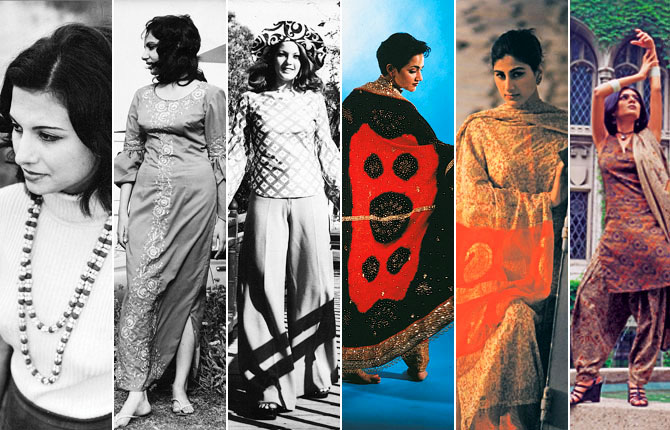
The 1970s and 1980s were transformative decades for Pakistani fashion. With the introduction of television, fashion took precedence and fashion was influenced by popular dramas.
Designers like Maheen Khan and Faiza Sami emerged, creating modern interpretations of traditional fashion. This period also saw the rise of boutique culture, where bespoke fashion became more accessible to the masses.
the prêt-à-porter (ready-to-wear) fashion trend of the 1990s marked a turning point. Designers like Sana Safinaz, Amir Adnan, and Deepak Perwani revolutionized the industry. By providing stylish, affordable clothes for the modern woman Concept of a designer lawn of ideal shorts for Pakistan. These hot summer ideas became very popular, and haystacks were eagerly awaited at some point each year.
Modern Era Changes: The Fusion Of Tradition And Innovation
In the 21st century, Pakistani womenswear brands have embraced tradition and innovation, creating a dynamic style. The rise of digital technology and social media has transformed the consumption and marketing of fashion.
Online platforms have enabled brands to reach a global audience and showcase Pakistani fashion to the world.
Modern Fashion designers now blend traditional craftsmanship with new designs. Brands like Keitfa, Élan, Maria B, and Zara Shahjahan are known for mixing classic and elegant styles.
They experiment with fabrics, cuts, and embellishments, creating unique pieces that are both traditional and contemporary. Sustainability has also become a major focus for many brands.
Given the significant impact of humans on the environment, manufacturers are incorporating sustainable practices into their product designs.
Brands like Ketifa, Generation, and Gul Ahmed are leading the way with eco-friendly products, ethical employee practices, and gentle fashion promotions.
This shift towards sustainability reflects a broader global trend, suggesting a conscientious approach to fashion design.
The influence of the Pakistani diaspora also plays an important role in shaping modern fashion. Pakistani designers abroad, such as Shamail Ansari and Bunto Kazmi, bring an international sense to traditional design, creating an attractive fusion for a global audience. Fashion week like PFDC Sunsilk Fashion Week and Hum Showcase in Pakistan for designers to showcase their creativity provides a platform and encourages innovation and creativity.
Watch History Of Pakistani Fashion Part 2
Cultural Significance And Social Impact
Clothing in Pakistan is not just about fashion; It carries cultural significance and reflects social values. Modesty is an important part of Pakistani fashion, and many women still opt for clothes that cover their bodies beautifully.
The hijab and abaya have become fashion statements, with brands offering a wide variety of high-end styles to cater to minimal fashion requirements.
The fashion industry in Pakistan has also become a platform for social change. Many brands are actively involved in philanthropy, supporting causes such as education, women’s empowerment, and health care.
For example, brands like Ketifa, Barej, and Khadi have programs that encourage women’s entrepreneurship and skill development, thus contributing to the socio-economic development of local communities
Furthermore, fashion shows and campaigns often address social issues, challenge stereotypes, and promote diversity.
Different bodies, skin tones, and ethnicities are gradually being represented in fashion campaigns, reflecting a more inclusive approach.
Challenges And Future Prospects
Despite the progress, the Pakistani fashion industry faces many challenges. Lack of adequate facilities, inconsistent quality standards, and competition from international brands are major obstacles.
In addition, political instability and economic fluctuations affect the growth of the industry.
However, the future looks promising. The revolutionary and creative Pakistani fashion designers continue to push fashion boundaries.
The integration of technologies such as virtual fashion shows and e-commerce platforms creates new growth opportunities.
An emphasis on sustainability and fashion can strengthen the industry’s global standing.
The role of young people in shaping future behavior cannot be ignored. Young designers are bringing new ideas, experimenting with avant-garde styles, and challenging traditional values. This new emerging talent is crucial for the continued growth of Pakistani fashion.
Conclusion
Pakistani Women’s Clothing Brands’ journey is a testament to the country’s rich cultural heritage, historical achievements, and modern innovations. From traditional shalwar kameez to modern fusion dresses, the fashion industry has evolved incredibly, embraced change, and has glorified its roots.

